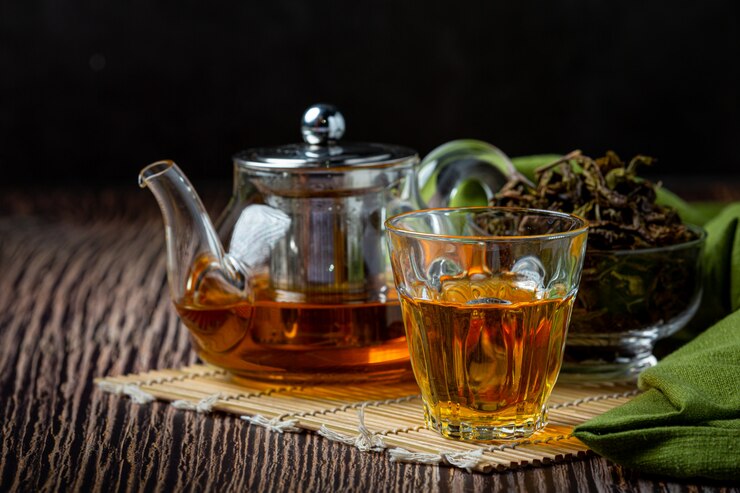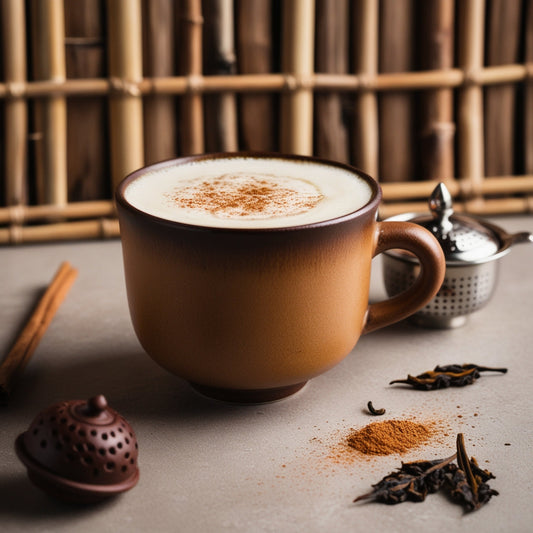Overview
Are you a tea enthusiast eager to expand your palate or someone seeking healthy beverage options? Explore the captivating world of green and oolong teas! Both rooted in ancient Chinese traditions, these teas boast rich histories, unique production processes, and distinct flavors. Green tea, with its light, fresh taste and minimal oxidation, originates from Yunnan Province and offers numerous health benefits like disease protection and brain support. Oolong tea, discovered in Fujian Province, undergoes a semi-oxidation process that creates a complex flavor combining the best of green and black teas. Whether you prefer the refreshing taste of green tea or the rich, layered flavors of oolong tea, each sip offers health benefits and a connection to centuries-old tea culture.
Table of Content
- Introduction
- Origins
- Production Process
- Flavour Profile
- Health benefits
- Caffeine content
- Brewing process
- Conclusion
Introduction
Green tea and oolong tea, both originating from China, offer rich histories and unique production processes that highlight their distinct characteristics. Green tea, rooted in the ancient traditions of China's Yunnan province, boasts a fresh, light flavor profile due to its minimal oxidation. It’s celebrated for its numerous health benefits, including disease protection, metabolism boosts, and brain support, thanks to its polyphenols, catechins, and EGCG. Oolong tea, discovered in Fujian Province, undergoes a semi-oxidation process, resulting in a diverse flavor profile that combines the qualities of green and black teas.
Origins
Green Tea
Green tea originated in China, where the word “tea” still refers exclusively to green tea. Yunnan province, the original home of the Camellia sinensis plant, boasts 260 of the world’s 380+ tea varieties. Legend has it that Shennong, the Emperor of China and supposed inventor of Chinese medicine, discovered tea as a beverage around 2737 BC when fresh tea leaves accidentally fell into his cup of just-boiled water.
Oolong Tea
Oolong tea was first discovered in the Anxi region of Fujian province. A man named Sulong, Wulong, or Wuliang accidentally allowed his tea leaves to oxidize after being distracted during the harvest.

Production Process
Green Tea
For green tea, harvesters quickly heat the leaves from the Camellia sinensis plant by pan firing or steaming and then dry them to prevent excessive oxidation, which would turn the green leaves brown and alter their fresh-picked flavor.
Oolong Tea
Oolong tea undergoes a unique semi-oxidization process that ranges from 1% to 99%. After picking, the leaves wither and semi-oxidize in the sun before being shade-dried. The leaves are then basket-tossed to break down the surface cells and wok-fired to halt the oxidation process. Heating methods include hand-roasting the tea leaves in multiple steps, usually throughout the night.
Flavour Profile
Green Tea
Brewed green tea is typically green, yellow, or light brown. Its flavor profile ranges from grass-like and toasted (pan-fired) to vegetal, sweet, and seaweed-like (steamed). When brewed correctly, most green tea should be quite light in color and only mildly astringent.
Oolong Tea
Oolong tea combines the characteristics of green and black teas. Lightly oxidized oolong tea has a slightly sweet, melon flavor and a woody, roasted taste similar to black tea. The flavor of oolong tea varies depending on the type, origin, and processing methods, as well as the steeping time.
Health Benefits
Green Tea
Green tea contains polyphenols that protect against disease and contribute to a balanced diet, supporting focus, promoting calm, and protecting the brain. They boost metabolism, aid blood sugar control, reduce the risk of diabetes and heart disease, support bone health, and improve gut health by nourishing beneficial bacteria. These effects stem from natural stimulants, amino acids like L-theanine, and potent compounds like catechins and EGCG.
Oolong Tea
Regularly drinking oolong tea can help lower cholesterol, reduce the risk of heart disease and cancer, and aid weight loss. Oolong tea also improves dental health as it naturally contains fluoride, which helps prevent dental cavities.

Caffeine Content
Green Tea
A Journal of Food Science test found that caffeine levels in commercial brands of green tea vary from 11 mg to 47 mg per 8 oz. cup, with some sources reporting up to 60 mg per brewed cup.
Oolong Tea
An 8 oz. cup of oolong tea contains about one-third less caffeine than an 8 oz. cup of coffee. This varies depending on how long the tea is steeped; the longer the steep time, the higher the caffeine content will be.
Brewing Process
Green Tea
Use fresh, pure, cold-filtered water, preferably spring water. Typically, brew green teas in short infusions at around 160 to 180 degrees. Avoid scorching your tea by letting boiling water rest before pouring it over the leaves. Use about 2 grams of loose leaf tea per 8 oz. cup of water, or follow specific steeping recommendations on the tea package. Cover the steeping tea to retain heat. Steep early harvest, more delicate teas for 30 to 60 seconds, and regular harvest, more robust teas for 2 to 3 minutes. Most high-quality loose leaf teas can be steeped multiple times.
Oolong Tea
Prepare oolong teas at a water temperature of 185°-206°F, with a steep time of about 3-5 minutes. These suggested temperatures may vary depending on the type of oolong and the oxidation level of the dry leaf. Oolong teas can be re-steeped multiple times.
Conclusion
Green tea and oolong tea, with their rich histories, distinct production processes, unique flavor profiles, and unique characteristics, offer a wealth of health benefits. From green tea’s disease-fighting polyphenols to oolong tea’s heart and dental health benefits, these teas provide not only delightful drinking experiences but also substantial contributions to overall well-being. Whether you seek the light, refreshing taste of green tea or the complex, rich flavors of oolong tea, both are excellent additions to a health-conscious lifestyle.
Discover the vibrant world of tea by incorporating green tea into your daily routine. Explore various brands and types to find your perfect match, and experience the numerous health benefits that traditional Chinese tea has to offer. Start your journey to better health and a richer tea experience today! Enjoy green tea without side effects.
Enhance your tea collection by adding Pu-erh tea from Puerh Craft. Its unique flavor and health benefits can seamlessly complement your pursuit of greater vitality and relaxation. Start your journey to better health and a richer tea experience today, and enjoy green tea without side effects.
Q&A
Q. What are the main health benefits of green tea?
A. Green tea is rich in polyphenols, which protect against disease and support a balanced diet. It boosts metabolism, aids in blood sugar control, reduces the risk of diabetes and heart disease, supports bone health, and improves gut health by nourishing beneficial bacteria. It also contains natural stimulants and amino acids like L-theanine, which promote focus and calm.
Q. How does the production process differ between green tea and oolong tea?
A. Green tea leaves are quickly heated by pan firing or steaming and then dried to prevent oxidation, maintaining their fresh-picked flavor. Oolong tea undergoes a semi-oxidization process, ranging from 1% to 99%. The leaves are withered, semi-oxidized in the sun, shade-dried, basket-tossed, and wok-fired, which halts the oxidation process and develops its unique flavor.
Q. What is the flavor profile of oolong tea compared to green tea?
A. Green tea typically has a light, fresh taste with flavors ranging from grass-like and toasted to vegetal, sweet, and seaweed-like. In contrast, oolong tea combines the characteristics of green and black teas, offering a slightly sweet, melon flavor and a woody, roasted taste. The flavor of oolong tea can vary greatly depending on its type, origin, and processing methods.
Q. How much caffeine is in green tea and oolong tea?
A. Green tea contains between 11 mg to 60 mg of caffeine per 8 oz. cup, depending on the brand and brewing method. Oolong tea generally has about one-third less caffeine than an 8 oz. cup of coffee, with the exact amount varying based on steeping time—the longer the steep, the higher the caffeine content.
Q. What is the best way to brew green tea and oolong tea?
A. For green tea, use fresh, pure, cold-filtered water at 160 to 180 degrees, and steep for 30 to 60 seconds for early harvest teas or 2 to 3 minutes for more robust teas. For oolong tea, use water at 185°-206°F and steep for 3-5 minutes. Both types can be re-steeped multiple times to enjoy their evolving flavors.






